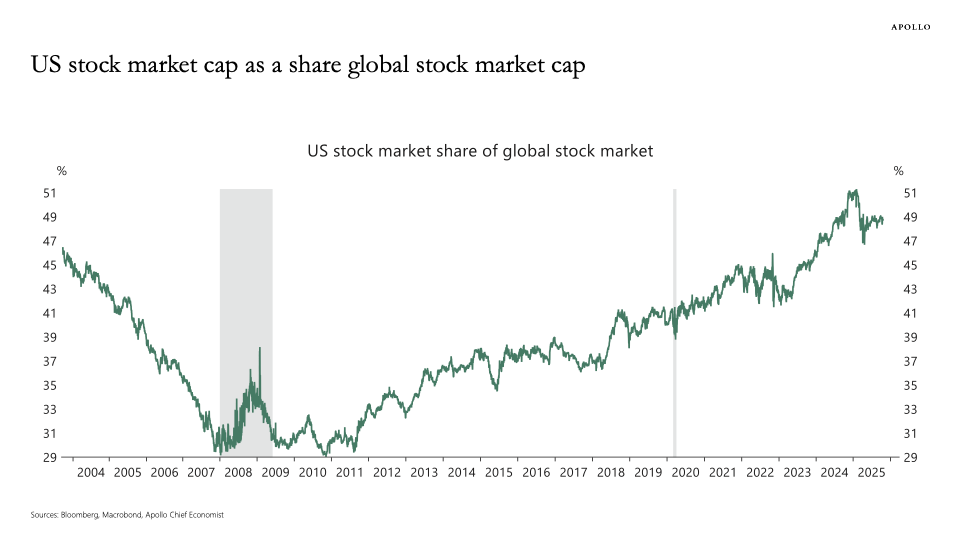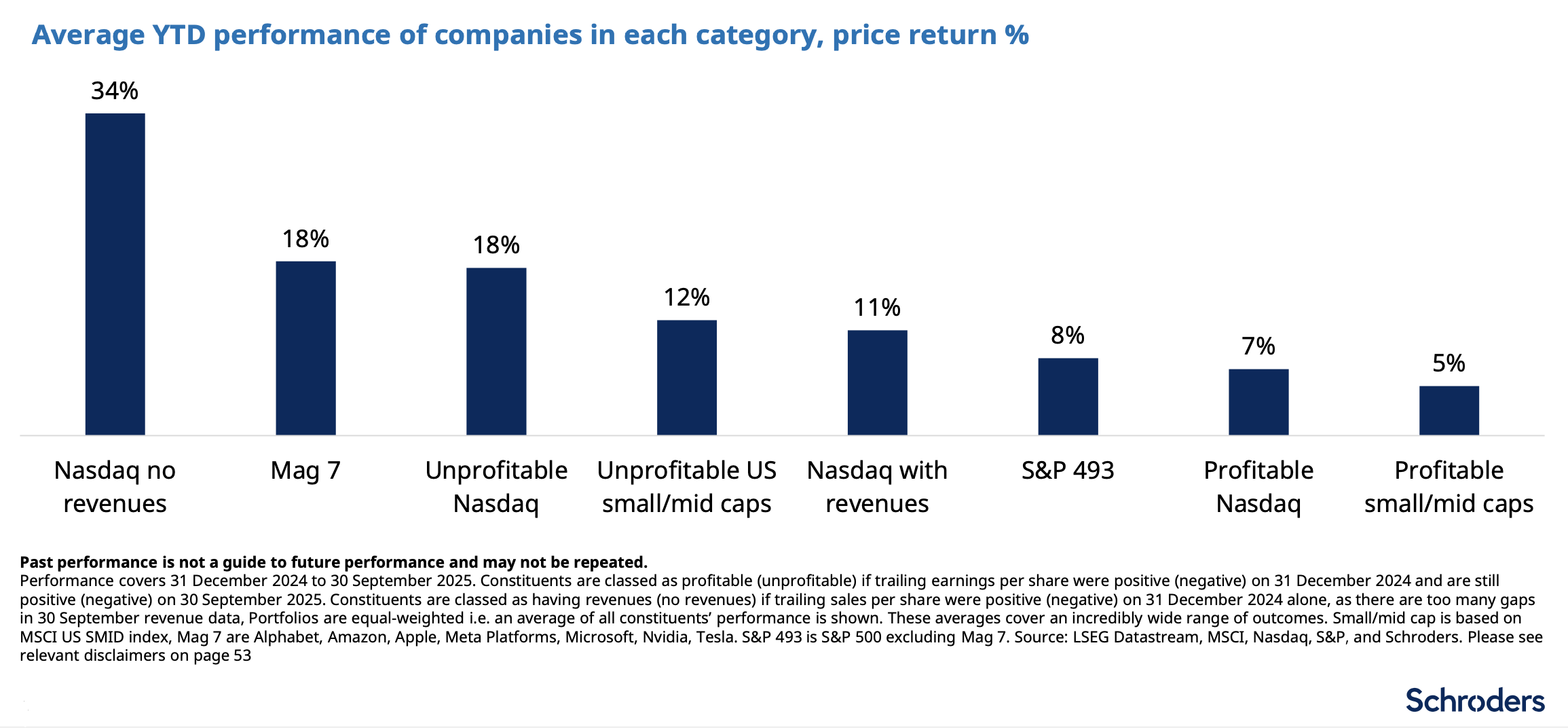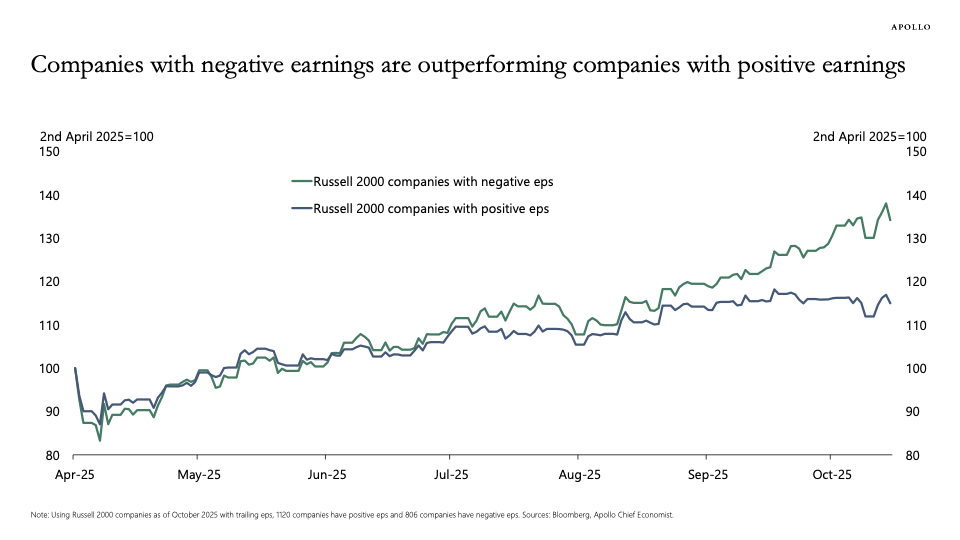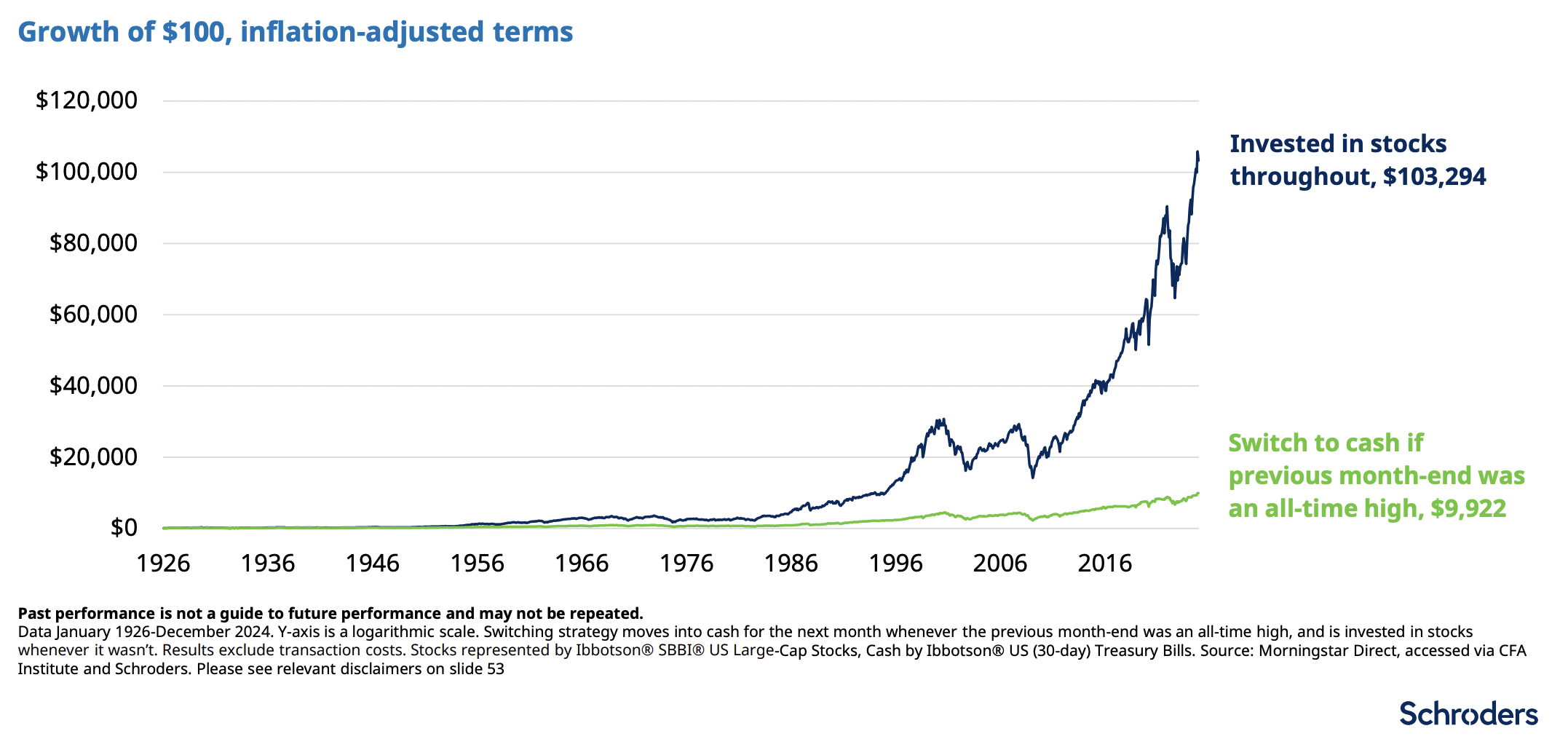2 shock signs the stock market is in a bubble (that aren't AI)
The US stock market has cast a long shadow over the rest of the global equities markets for decades, and that shadow has only gotten longer.
According to data from Apollo Global Management, since the GFC, the US stock market has seen its share of the total global equities market cap grow from less than 30% to around 50% today.

Given its global dominance, the US market is also where investors need to be looking if they want a quick health check on global stocks. And while 2025 has been another bumper year for equities markets the world over, there's a few signs emerging that the party could be coming to an end.
Here are two warning signs that may have flown under your radar, and what the best course of action may be if you're worried about a stock bubble.
-
No revenue companies are outperforming everything else
In an unwelcome echo that recalls the jubilance of the Dot-com bubble, there's one sub-sector on the Nasdaq that is leaving the rest in its dust - and it isn't the Mag 7.
According to research by Schroders, the cohort of Nasdaq-listed companies with no revenue are the best overall performers of 2025, with a 35% return. It puts them well ahead of the Mag 7 themselves (18%), as well as unprofitable small and mid-caps (also 18%).
By contrast, the S&P 493 (i.e. the S&P 500 without the Mag 7) have returned only 8% in 2025, and profitable Nasdaq companies have returned only 7%.

If nothing else, it demonstrates that investors remain optimistic and are looking to chase potential rather than stick with more reliable names. As Schroders wrote in a note, "This disparity underscores that revenue generation and profitability are not consistent predictors of YTD price performance, with speculative growth stocks outperforming more established or profitable entities."
2. Companies with negative earnings are outperforming companies with positive earnings
There's another red flag at the other end of town. US small caps with negative earnings per share (EPS) are outperforming those with positive EPS, according to data from Apollo.
As Torsten Sløk, Apollo chief economist, wrote in a recent note, "Stock prices of companies with negative earnings have in recent months outperformed stock prices of companies with positive earnings."
"Something remarkable is going on in the equity market." - Torsten Sløk, Apollo chief economist
The Russell 2000 index, which tracks US small caps, shows negative EPS stocks have now clearly outperformed their peers since April's Liberation Day. With many of these unprofitable companies coming from the tech sector, it again suggests investors are trying to squeeze better returns out of the ongoing tech boom despite a lack of fundamentals.

What should investors do?
For investors rightfully worried about valuation disconnects and a potential correction, the temptation may be to keep your cash on the sidelines until things calm down.
Duncan Lamont, head of strategic research at Schroders, says history suggests that may be the wrong approach.
"After crashing hard in April, the US stock market rebounded even harder, recently hitting a new all-time high," Lamont wrote. "This has left many investors feeling nervous about the potential for a fall."
"Many others have parked savings in cash, attracted by the high rates on offer. The thought of investing that cash-on-the-sidelines when the stock market is at an all-time high feels uncomfortable. But should it? The conclusion from our analysis of stock market returns since 1926 is unequivocal: no."
The last 100 years of US stock market history shows someone who stayed invested when the market was at an all-time high (which is surprisingly around 31% of the time) fared a lot better than someone who switched to cash every time the last month ended at an all-time high.

The average inflation-adjusted 12-month returns for US large cap equities over the last century have been higher following an all-time high than at all other times. According to Schroders data, the average 12-month return was 10.4% after an all-time high, compared to an average of 8.8% at all other times.
As this data suggests, stock markets often continue to outperform when at all-time highs and there are plenty of headwinds - falling interest rates, stabilising global trade policy, an end to quantitative tightening - that could see the rally continue for the foreseeable future.
For those getting nervous, the best course of action may simply be to stay put.
4 topics

